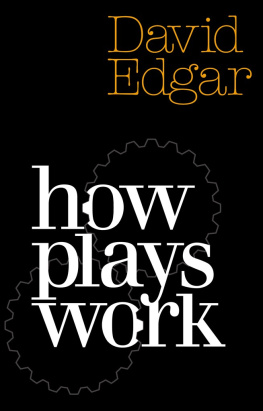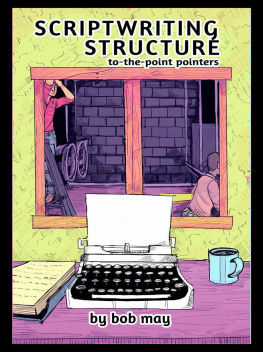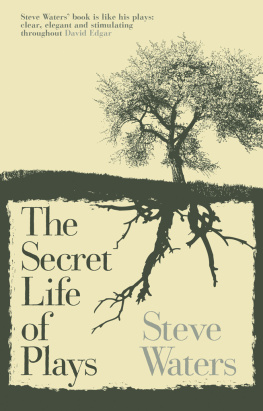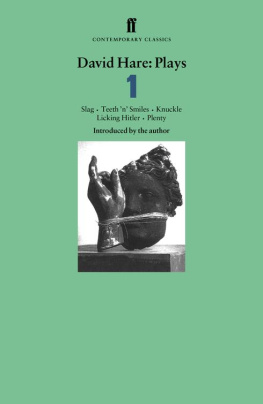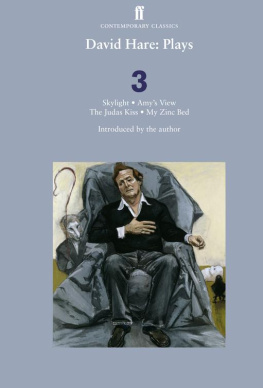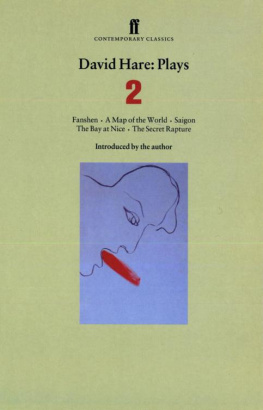David Edgar - How Plays Work
Here you can read online David Edgar - How Plays Work full text of the book (entire story) in english for free. Download pdf and epub, get meaning, cover and reviews about this ebook. year: 2010, publisher: Nick Hern Books, genre: Detective and thriller. Description of the work, (preface) as well as reviews are available. Best literature library LitArk.com created for fans of good reading and offers a wide selection of genres:
Romance novel
Science fiction
Adventure
Detective
Science
History
Home and family
Prose
Art
Politics
Computer
Non-fiction
Religion
Business
Children
Humor
Choose a favorite category and find really read worthwhile books. Enjoy immersion in the world of imagination, feel the emotions of the characters or learn something new for yourself, make an fascinating discovery.
- Book:How Plays Work
- Author:
- Publisher:Nick Hern Books
- Genre:
- Year:2010
- Rating:3 / 5
- Favourites:Add to favourites
- Your mark:
- 60
- 1
- 2
- 3
- 4
- 5
How Plays Work: summary, description and annotation
We offer to read an annotation, description, summary or preface (depends on what the author of the book "How Plays Work" wrote himself). If you haven't found the necessary information about the book — write in the comments, we will try to find it.
How Plays Work has grown out of David Edgars teaching in the University of Birminghams MA course in playwriting studies, which he founded twenty years ago. Through historical and modern examples, the book analyzes the basic elements of dramatic structure, action, plot, character, dialogue, and genre.
How Plays Work — read online for free the complete book (whole text) full work
Below is the text of the book, divided by pages. System saving the place of the last page read, allows you to conveniently read the book "How Plays Work" online for free, without having to search again every time where you left off. Put a bookmark, and you can go to the page where you finished reading at any time.
Font size:
Interval:
Bookmark:

To Amy, Tim and Lucy Downing
Preface:
Beginnings
First things first. You know all this already.
This book is about mechanisms and techniques which are familiar to us as audiences, because they work on us whenever we watch a play or a television drama or a film. What Ive tried to do is to name and describe those techniques, to position them in categories, and to gather them together into a theory. In A Midsummer Nights Dream, Theseus speaks of the poets eye, in a fine frenzy rolling, which brings forth things unknown, turns them to shapes, and gives them a local habitation and a name. I hope theres a bit of fine frenzy in this book, but its basic purpose is the placing of parts, and the naming of names.
Although intended to be useful to anyone interested in plays and how they work, this book started out as a series of workshops for playwrights. In the mid-1970s, I ran a fortnightly playwriting option at the University of Birmingham for undergraduate drama students (fortunately for me, they included Terry Johnson and Louise Page). It was clear from this experience that there were ways of thinking about dramatic problems (on the level of where scenes start and end, whos on the stage and how to get them on and off ) which can be collectively explored and individually applied. In the late 1980s, the then head of the Birmingham department, Gerry McCarthy, asked me to consider designing and running a postgraduate course, to extend and develop the work Id done at undergraduate level.
Although located in a university, I saw Birminghams MA (now M.Phil) in Playwriting Studies as an outgrowth of a self-help movement among playwrights that had taken off earlier in the decade, in response to a questioning of the quality of new plays by critics and, increasingly, directors. The most prominent self-help group was the Manchester-based North-West Playwrights, founded in Manchester in 1982 by the local branch of the Theatre Writers Union; there were also groups in the North East and, later, the West Midlands. Three of the underlying principles of the Birmingham course, then and now that it is taught by practising playwrights, that it combines theoretical exploration with work on student texts, and that it involves live performance of students work were principles that defined the self-help movement.
It was also based on the notion that there was something to learn. The playwright Howard Brenton once pointed out that the stage play is as tight a form as the eighteenth-century sonata. It lasts between two and three hours (usually), is performed in two or three chunks (typically), and consists of a group of people almost always in one place presenting an enacted story to another group of people sitting in front of or sometimes around them. Its not surprising that an art form squeezed into such narrow confines has built up a repertoire of conventions which its audiences bring with them into the playhouse whether theatre-makers like it or not, and which aspirant playwrights can study.
When the course began in the autumn of 1989, we quickly discovered that this is not a universally accepted truth. In our second year, I wrote a piece about new writing in The Independent, which provoked a distinguished British playwright to claim that the real problem with contemporary drama was the existence of my course. From the beginning, we were up against the British cult of the crusty amateur: that prejudice which, in the theatre, is expressed in the belief that while actors can benefit from training (along with stage managers and other footsoldiers of the craft), directors and writers are supposed to aquire their skills telepathically; that the very idea of training devalues the status and may indeed stunt the imagination of the lone artist engaged in isolated struggle with the muse.
From the start, the course was divided into exploration of the students own work (which happened on Mondays) and study of the contemporary and historical canon (on Tuesdays). The idea was that theatre writing is both an art and a craft, a distinction which could also be expressed as first draft versus second draft, play-writing versus playwrighting, getting it good versus getting it right. Monday and Tuesday thinking became a shorthand; Stephen Lowes and later Richard Pinners Monday workshops were about fine frenzy, releasing the imagination, letting inspiration take you where it will. While Tuesdays were about creating order out of chaos, cleaning up, fixing, licking into shape. Of course, in reality, these two approaches overlapped. As we insisted, not everybody writes their first and second drafts that way. But everybody has to work through both processes at some point or another.
In early 1996, I spent three months as a Judith E. Wilson Visiting Fellow at Clare Hall, Cambridge, during which the contents of the early Tuesday seminars expanded into what I grandly called a foundation course, which I taught at the start of the MA year, and which is the basis of what follows. Initially, these sessions had been structured around a narrowing focus: I began by looking at the building blocks of whole plays, then the elements of scenes, and finally a menu of devices. At Cambridge, I added sections on character, play structure and genre, and confirmed my growing conviction that all these components share a fundamental dramatic shape, the argument with which I conclude this book.
In its development, I am hugely indebted to the writers and directors who came to Birmingham to talk about the plays and playwrights they admired. Much of what I say about Chekhov is gleaned from Trevor Griffithss sessions on The Cherry Orchard and Max Stafford-Clarks on Three Sisters. Howard Brenton deepened my understanding of Brecht in his seminar on the telescope scene in The Life of Galileo, and Stephen Jeffreys found a way of saying most of what needs saying about writing large scenes in his study of the park scene in The Man of Mode. I remember a Birmingham-to-London train journey during which Joe Penhall gave an impromptu, personal tutorial on the difference between two-handers and three-handers; screenwriter Michael Eaton introduced me to the concept of liminality; my conversations with April de Angelis led to my asking her to take over the course when I retired in 1999 (which she duly did). In our first year, Anthony Minghella outlined ten basic principles of playwriting which I have plundered mercilessly ever since.
Most of all, I learnt from the 115 students who did the MA during my time at Birmingham University, who included my later successors Sarah Woods and Steve Waters. Another course graduate the playwright Stephanie Dale has either read or heard all of this book (much of it many times). Without her insight, encouragement and patience, it would not have been written.
Justifying the title
In his preface to The Modern British Novel, Malcolm Bradbury admitted that the only incontestable element in his title was the definite article. As a title, How Plays Work could appear similarly hubristic. It could mean merely how some plays work, or even how some of some plays work or how some of some plays work some of the time. I would defend the books thesis, but I appreciate that it, too, is bound by its times.
It is certainly based on a limited sample, which is partly about my taste, partly about the taste of my colleagues, and partly about the repertoire of the British theatre when I was growing up (many of the plays cited are those which my parents who worked and met at the Birmingham Repertory Theatre took me to or enabled me to see). So, theres a great deal from the British theatrical grand narrative, from Shakespeare via the Restoration, Sheridan and Shaw to the flowering of new drama since the Second World War. Theres some classical Greeks, a lot of Ibsen and Chekhov, Brecht and Arthur Miller; but regrettably little from the French, Italian, Spanish or German theatres, at least before 1900. There is little reference to physical, live, devised and/or event theatre, partly because so few of its texts are published or otherwise accessible. To compensate, I have drawn many examples from other dramatic media, from films, television and radio. This is partly because this book started out as a seminar series, and these examples as illustrative clips. But referring to film and television underlines my belief that there is more in common between the dramatic media than is generally acknowledged; or, at the very least, that stage playwrights can learn more from their sister media than they sometimes think. There is also some academic reference, again drawn from a fairly limited range, but here I make less apology. A quick flip through the endnotes will make clear how much I owe to Marvin Carlsons encyclopaedic
Next pageFont size:
Interval:
Bookmark:
Similar books «How Plays Work»
Look at similar books to How Plays Work. We have selected literature similar in name and meaning in the hope of providing readers with more options to find new, interesting, not yet read works.
Discussion, reviews of the book How Plays Work and just readers' own opinions. Leave your comments, write what you think about the work, its meaning or the main characters. Specify what exactly you liked and what you didn't like, and why you think so.

